Curtiss’ standard observation plane
During the last five years preceding the war, a transitional Observation biplane was carried by most USN warships, from battleships to cruisers, just being replaced by more modern models such as the Douglas Kingfisher. Between limited squadrons per ship (2-3), and a few aircraft carriers (for the wheeltrain/hook version), only 322 were made, the bulk by Curtiss and the remainder by the State-owned Naval Aircraft Factory (NAF) from Philadelphia. Production ceased in 1938, but the model itself was being retired… but came back to soldier on until 1945. More than a simple footnote, this was Curtiss’ answer to the Navy for a dependable, rugged, long range cruiser observation aircraft and it did the job, until its planned replacement, the Curtiss SO3C Seamew, faied miserably and was soon sidelined. So by force, the venerable SOC biplane came back alongside the Kingfisher as the main observation workhorse of the USN.
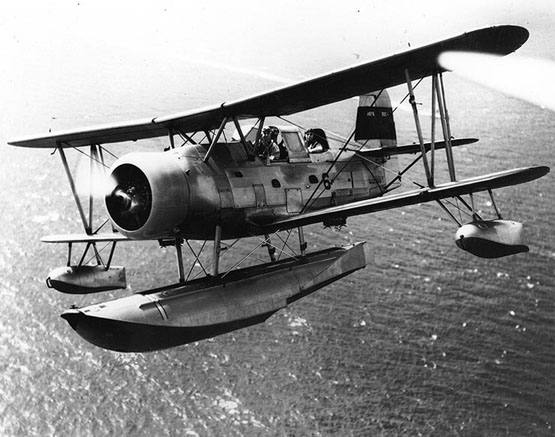
Curtiss SOC-1 floatplane in flight
About Curtiss and the US Navy

The Curtiss (NAF) TS-1 fighter and trainer, here onboard USS Langley in the 1920s.
Unlike Grumman, which was a “pure player” providing only the USN, Glenn Curtiss was a household name in US Aviation, pioneering models from 1909, until producing massive quantities in WWI. The legendary Curtiss JN-4 “Jenny” became the most produced US aircraft, even worldwide, with 6,300 delivered from 1915 up to the late 1920s, and still around in civilian service in the late 1930s. Soon, Curtiss found a juicy market with the needs of the US Navy.
It lobbied to provide both planes and training for USN pilots, starting with 144 Model F trainer flying boat and hiring B. Douglas Thomas (from Sopwith) as designer for the Model J trainer, leading to the JN-4, the “N” standing for the Navy. The JN-4 “Canuck” was built in Canada and five manufacturers to deliver more models of the Model L (1916), Model N (560), HS-2L flying boat in 1917, designed by Philip Porte (Felixtowe) (1178), the improved JN-6H in 1918 (1035), the Twin JN, the Model R (290) and S, and experimented with the Wanamaker Triplane, the GS, and HA. Its last model was the floatplane fighter intended for ships of the Navy, the Curtiss 18T triplane of 1918. The immense numbers of JN-4s formed generations of pilots, including Amelia Earhart and many future aces and future officers of the USN and USAAC.
In the 1920s to stay sharp and keep attention of the medias after the cancellation of military orders, Curtiss targeted performances and competition, caring for aeodynamics like no other company at that time. Curtiss Racers became world famous and like Supermarine, the company embarked in the bandwagon of floatplane racer, competing (and winning) at the prestigious Deutsche de la Meurthe and Schneider Cups in Europe, and an almost uncontested challenger of air races at home.

Marines OC-2 in flight, 1929. These became the stars of many films, including King Kong.
Making everything to stay in media lights, Glenn Curtiss managed to secure more orders, but not initially from the Navy: Its Curtiss CT Twin engine biplane torpedo bomber (1921) failed, but the US Army Air Corps adopted its P-1 Hawk. It was compared to Boeing, preferring sleek shapes allowed by inline engines and liquid cooling, contrary to Boeings’s radials. It was succeeded by the P6 Hawk in 1930. It also even produced a bomber, the Curtiss B-2 Condor, and for the Navy, the Curtiss Twin JN, Curtiss F5L and Curtiss TS used for example on USS langley. But the lineage leading to the SOC started with the Curtiss Falcon (1925) a mass-produced observation biplane also used by the USN which adopted the F8C-1 and F8C-3 Falcon as shipboard fighter from 1927 and up to 1928. Later they became the OC-1 and OC-2 used by the US Marine Corps as observation/light bomber model. The F8C-4 Helldiver was its famous later variant used from 1931 by the Marine Corps, later O2C-1 used by VN-10RD9, VN-11RD9, and VN-12RD9 and remaining in service until 1936.
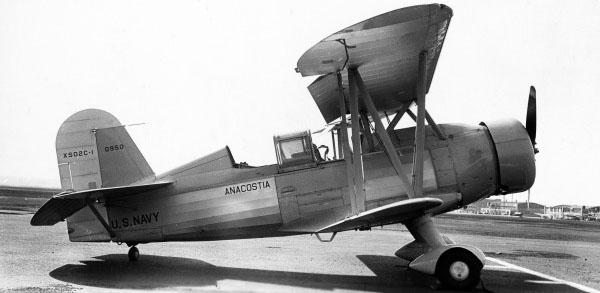
Curtiss XSO2C floatplane in Anacostia
Origins of the SOC program
The Curtiss SOC emerged from a program in 1933 intendd to procure a new, more specialized observation planes to the USN. It was to be primarily a replacement for the OC-2 of the Navy, and prospects started in 1932 already. The idea was a task separation by ship: Scouts operated from cruisers and observation aircraft from battleships. However it soon appeared having both types performed by a single model had advantages. In 1933, curtiss presented its initial proposal, XO3C-1, supposed to be an observation/spotted plane -so for battleships.
The prototype XO3C was tried on the ground and modified in 1934, making its maiden flight in April. At that stage it was a single bay biplane operating either from its single main central float plus underwings stabilizer floats, or wheels, but needed adaptation. The XO3C-1 was originally designed as a pure amphibian, with twin wheels built into the central float. Curtiss however dropped the idea as overcomplicated. It was designed by Alexander Solla specifically to answer the Navy specifications for a convertible biplane, equipped either with floats or a wheeltrain. The floatplane version was to be able to withstand the stress of being catapulted, and retreived at sea by all weather. Speed was less important than range, which needed to be at least 500 nautical miles, with a service ceiling of around 15,000 feets.
The XO3C was eventually ordered for production by the United States Navy and the first pre-production model tested was called XO3C-1 (Curtiss Model 71 was its factory designation). This final prototype aircraft was powered by the latest aialable engine, the 550 hp (410 kW) Pratt & Whitney R-1340-12 air-cooled engine. The single prototype built was redesignated XSOC-1 on 23 March 1935 and production was started. It first entered service the same year, later in 1935. The Navy passed a first order for 135 SOC-1 models, followed by 40 SOC-2 models for landing operations (with wheeltrain carriage and hook), and 83 SOC-3s. Soon, Naval Aircraft Factory often producing Curtiss models was contacted and declined the model as the SON-1.
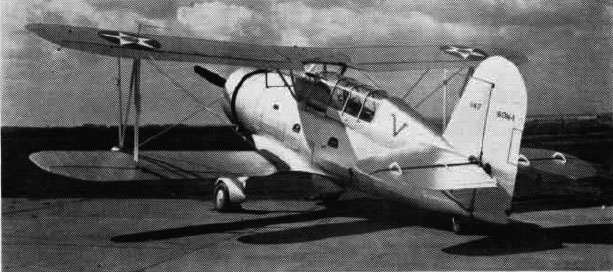
Naval Aicraft Factory NAF SON-1, 1939
Design of the Curtiss SOC
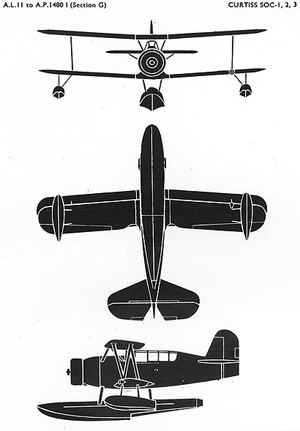 The name “seagull” was only adopted from 1941 for easier identification like most USN and USAF models; The definitive production version called SOC-1 was given the Pratt & Whitney R-1340-18 engine (single-row, nine-cylinder), enclosed in NACA cowling after wind tunnel tests. As requested by the Navy, it had an interchangeable float and wheeled undercarriage. In Total, 135 were ordered.
The name “seagull” was only adopted from 1941 for easier identification like most USN and USAF models; The definitive production version called SOC-1 was given the Pratt & Whitney R-1340-18 engine (single-row, nine-cylinder), enclosed in NACA cowling after wind tunnel tests. As requested by the Navy, it had an interchangeable float and wheeled undercarriage. In Total, 135 were ordered.
The Curtiss SOC was a conventional biplane, with dihedral wings, with a slight V, and classic “N” style metal struts, four between the wings and uselage. The tailwings were implanted close to the fuselage top aft, forming a “X” tail. The forward fuselage was all-metal in duralumin, while the aft part as customary was made of metal framing covered by fabric as were the wings and tail. It was a quite advanced for the time with its fully enclosed cockpit plus full-span slots and flaps on the top wing. The novelty of this enclosed cockpit, covering its two seats, the pilot and observer could be slided open
Both the pilot and observers were armed: There was one fixed forward firing Browning 0.30 in (7.62 mm) M2 AN machine gun for the pilot in the fuselage, with syncronization system, plus another Browning M2 AN, flexible mounted, rear-firing 0.30 in machine gun at the rear for the observer.
In 1935 this was juged adequate as a close defence. The Curtiss seagull was however able to carry a small bomb load if needed for strafing attacks: In all 650 lb (295 kg) of bombs, under the wings. It was a light plane at 1,700 kgs (3800 Ibs) unloaded, taking the best of its 600 bhp Pratt & Whitney R-1340-18, relatively agile, but strongly built. It was slow, at 143 kn (165 mph, 266 km/h) top speed, cruising under 116 knots (133 mph/214 kph) and its rate of climb was not stellar at 915 ft/min (4.65 m/s). It was outperformed at any rate by the Kingfisher, almost doubling all characteristics.
curtiss SOC Caracteristics |
|
| Dimensions: | 9.56 x 10.97 m x 4.50 m (33 x 41 x 13 ft) |
| Wing area: | 342 sq ft (31.8 m2) |
| Airfoil: | NACA 0010 – NACA 2212 |
| Weight: Light | 3,788 lb (1,718 kg) |
| Weight: Max take-off | 5,437 lb (2,466 kg) |
| Propulsion: | P&W R-1340-18 600 hp (450 kW) |
| Performances: | Top speed: 48.6 kn (55.9 mph, 90.0 km/h) Cruise speed: 116 kn (133 mph, 214 km/h) Service ceiling: 14,900 ft (4,500 m) Rate of climb: 915 ft/min (4.65 m/s) |
| Range: | 587 nmi (675 mi, 1,086 km) at 5,000 ft (1,500 m) |
| Armament – MGs | 2x 0.3 cal |
| Armament – Bombs | 650 lb (295 kg) |
Production & variants
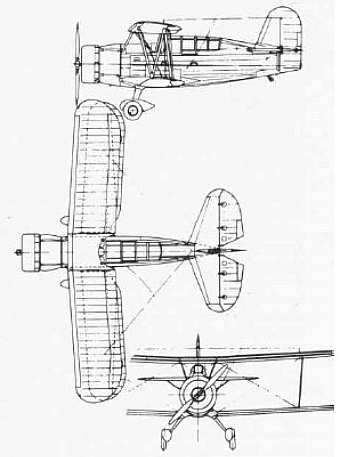
- XO3C-1 (Curtiss Model 71): Prototype with 550 hp (410 kW) P & W R-1340-12 engine, redesignated XSOC-1 in March 1935.
- SOC-1 (Curtiss Model 71A): Production version 550 hp (410 kW) Pratt & Whitney R-1340-18 engine, NACA cowling, Interchangeable float/wheeled undercarriage (135 built).
- SOC-2 (Curtiss Model 71B): R-1340-22 engine and wheeled undercarriage only version (40 built)
- XSO2C-1 (Curtiss Model 71C): Prototype of improved version.
- SOC-3 (Curtiss Model 71E): SOC-2 with interchangeable undercarriage. (83 Curtiss, 64 NAF SON-1).
- SOC-3A: Modified them SOC-3A standard with deck arrester gear.
- SOC-4: Also called Curtiss Model 71F for the U.S. Coast Guard (1938), USCG V171, V172, V173.
- SO2C: Evaluation prototype SOC-3 with 5-foot longer fuselage, R-1340-35.
- SON-1: Version from Naval Aircraft Factory (64 built).
Service
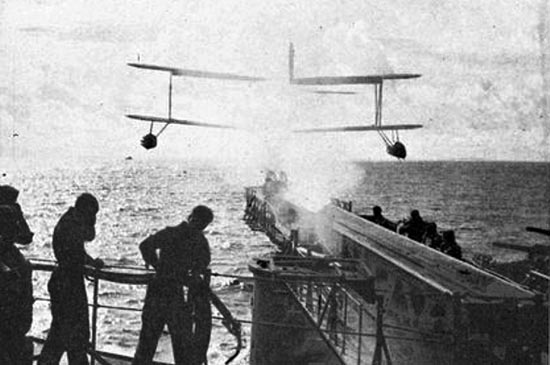
Curtiss SOC catapulted from USS San Francisco
The first USN ship operating the Curtiss SOC was the light cruiser USS Marblehead, of the Omaha class in November 1935. The SOC in 1938 had replaced all its predecessor in the fleet whereas Production ended. It equipped in early 1936 VS-5B, VS-6B, VS-9S, VS-10S, VS-11S and VS-12S already, allocated to individual battleships and cruisers in small numbers, hence the limited production.
In 1938, replacement was on its way, but ultimately the admiralty wanted a universal model, which happened to be wartime Vought OS2U Kingfisher, but on battleships. Indeed, cruisers were to be given the next Curtiss model of the third generation: The SO3C Seamew. However the new monoplane was wuofully underpowered, experiencing very poor performances and other issues. The program was delayed until 1942 and eventually the order was curtailed and instead, the SOC Seagull went on soldiering, providing gunfire observation and scouting missions for cruisers for most of early WW2.
The denomination “SOC” was the result of the merging of scouting and observation duties, but its name “seagull” was not active before 1941: Indeed tne USN started to adopt popular names for aircraft to complement their usual designations and make it easier to use. Both the Curtiss Model 18 and Model 25, converted MF flying boats, were also called that way. As floatplane, the SOC was catapulted, made its mission, and came back returning to land on ideally a smooth watery surface, which was artificially created as the mothership made a turn against to break waves, creating a sheltered side. As the flotplane closed on its own power, the crane was traverse above, the pilot hooked the winch to as to be lifted back onto the deck. Depending on the facilities onboard some ships, they could be housed and serviced, maintained inside a hangar, although usually it was kept over the catapult ready to fire, wrapped in a tarpaulin.
The remaining SOC were gradually replaced by OS2U Kingfisher and they were not retired to be scrapped but rather converted as trainers, used in this quality until 1945. However as the Curtiss SO3C Seamew was eventually rejected, some of these trainers went back to service by late 1943 and were used until 1945 on frontline in the Pacific and Atlantic. This unusual situation underlines how much the Curtiss Seamew was an unmitigated disaster, which, combined with the also controversial Helldiver ended the company’s old favor with the USN. The seagull however started to be replaced in 1944 by the SC-1 Seahawk, this time a successful Curtiss plane.
Details operations are of course mostly linked to the career and fate of their carrier ships, but they represent a good sample of their use on all theaters of WW2. Photographic evidence gives clues about the presence of them on each ship, with some planes retred and then back again (with the Seamew in between). The Seagull for example proved instrumental when directing artillery for shore bombardments in Operation Torch, invasion of Sicily and Salerno. Slow, the Curtiss SOC proved however highly vulnerable to enemy fighters. Over Normandy for example, Spitfires were used instead for observation.
It should be added that the Seagull became also one of the main observation plane onboard USN aircraft carrier, in its wheeled version. As per photo evidence, it served from USS Langley (AV-3) from 1937, USS Long Island (CVE-1), the first USN escort carrier in 1941, also equipped with depth charges, probably also throughout 1942 and on USS Cabot (CVL-28), a fast carrier until the end of the war. Those from USS Santee (CVE-29), Task Group 23.1, inugaurated ASW hunter-killer group tactics in the North Atlantic.
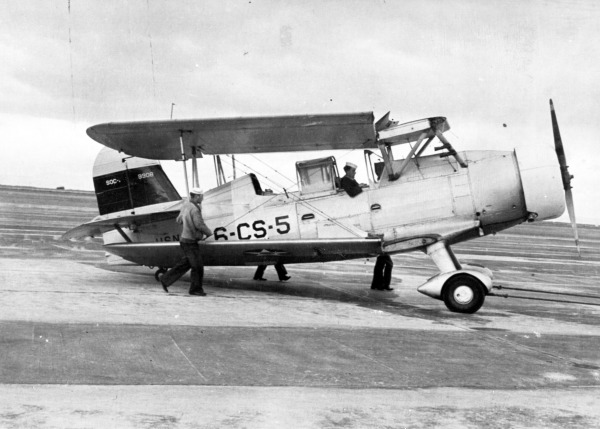
The fact the Seagull could fold wings was a crucial advantage.
The Seagull roamed indeed the North Atlantic from USS Tuscaloosa (CA-37) and the great north escort routes, as well as Murmansk. They were operated during the “quasi-war” during the time in between neutrality patrols and the Pearl Harbor attack, trying to spot and signal U-Boat to the HQ. At the latter, they were also present, in both wheeltrain and float version. Those of USS Houston operated in the Dutch East Indies in 1942 and they were ordered to fly to shore as the cruiser was later sunk at Java Sea. They also operated from USS Chester and Northampton during the raid on Marshall Islands in February 1942, saw the Coral Sea, battle of Midway (28 Seagulls from VCS-4, VCS-5 and VCS-6), invasion of Gaudalcanal, Tulagi. They flew by night, searching and spotting the Tokyo Express. They also took part in raid on Wake Island in October 1943 from USS Minneapolis (CA-36).
USS Wichita used Seagulls during the ill-fated PQ-17 escort in June-July 1942, famously scattered after Tirpitz was reported, leading to disaster. In July 1942, those from Indianapolis and St Louis patrolled to find the Japanese at Kiska in the Aleutians. They were also present during the Komandorski Islands battle (USS Salt Lake City). Others operated off Savo Island. But their most famous contribution was during Operation Torch by November 1942 from USS Philadelphia and USS Savannah, the latter being used to strafe and bomb opportunity targets and slow down Vichy French reinforcements. One even used a modified depth charge to destroy a shore artillery battery !
During the invasion of Sicily in July 1943, they proved easy preys and most were shot down by Italian Regianne RE 2001s and Fw 190s. They also guided shore bombardment during Operation Avalanche (Salerno) most shot down by German Bf 109s. VCS-7 was based in UK by June 1944 but they were swapped by spitfires for D-Day, and went back to their routine afterwards.
After they was no used for them in Europe, apart the landing in Provence in Auguts, operating at least from USS Brooklyn (CL-40), they went on fighting in the pacific: The battle of the Philippine Sea, notably as improvized air-sea rescue aircraft, spotters during the invasion of Guam, and the battle of Leyte from USS Saint Louis (CL-49), USS Portland (CA-33), or USS Montpelier during the invasion of Balikpapan in July 1945, or even USS San Francisco (CA-38) over south Korea in September 1945. In 1947 they took part in the Antarctic expedition from USS Currituck. That was quite a career for a USN plane, from 1935 to 1947. The last were not exported but scrapped. None survived in any museum or collection unfortunately for us to see today.
Read More
Sites
The XO3C-1 prototype
Curtiss On ww1-planes.com
On Curtiss Aeroplane and Motor Company
Nice cutaway on conceptbunny.com
on historyofwar.org
On mil factory
On aerocorner
On the seagull (wk)
More photos
Some extra footage
On Rex’s Hangar Channel
On wayback machine, pilot’s stories
On Larkin’s book content
On cruiserscouts.com
On history.navy.mil
Books
Steve Ginter – Naval Fighters Nr. 89
The Curtiss SOC Seagull, Aircraft Profile (Red) Non. 194 William T. Larkins
USN SOC-3 Seagull Part 1 VO-1, VO-2, VO-3, VO-4, VCS-9, VMS-2, Yellow-Wings Decals 1:72
Bowers, Peter M. Curtiss Aircraft, 1907-1947. London: Putnam & Company Ltd., 1979.
Donald, David. The Complete Encyclopedia of World Aircraft. Orbis Publishing Limited, 1997.
Green, William. War Planes of the Second World War, Volume Six: Floatplanes. London: Macdonald & Co.
Larkins, William T. Battleship and Cruiser Aircraft of the United States Navy. Atglen, PA: Schiffer Books
Mondey, David. The Hamlyn Concise Guide to American Aircraft of World War II. London: Chancellor Press
Munson, Kenneth. US Warbirds, From World War 1 to Vietnam. New York: New Orchard, 1985.
Swanborough, Gordon and Peter M. Bowers. United States Navy Aircraft since 1911. London: Putnam & Company Ltd.
The model kits corner
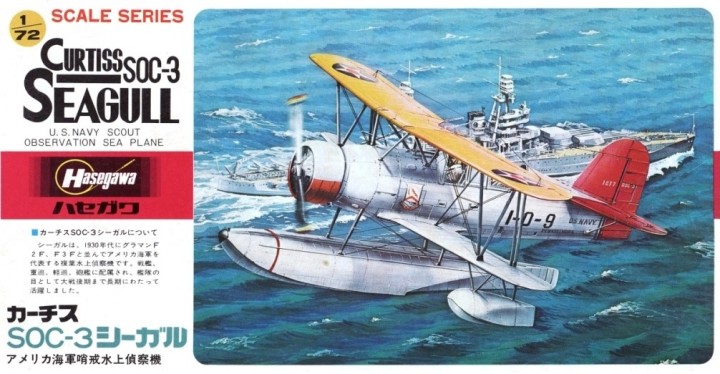
SOC-3 Hasegawa 1:72 On scalemates
More on this site
Minicraft Hasegawa 1:72, Hasegawa/Hales 1:72, Comet 1:72, Wings Models, Inc 1:48 WM48012, Torch November 1942 Forgotten Operations DP Casper decals 1:72, Lone Star 1/48, Vac Wings 1:48, USN Seagull (SOC-3) 1/200 For Trumpeter Arizona – Admiralty Model Works 1:200
Gallery
Illustrations
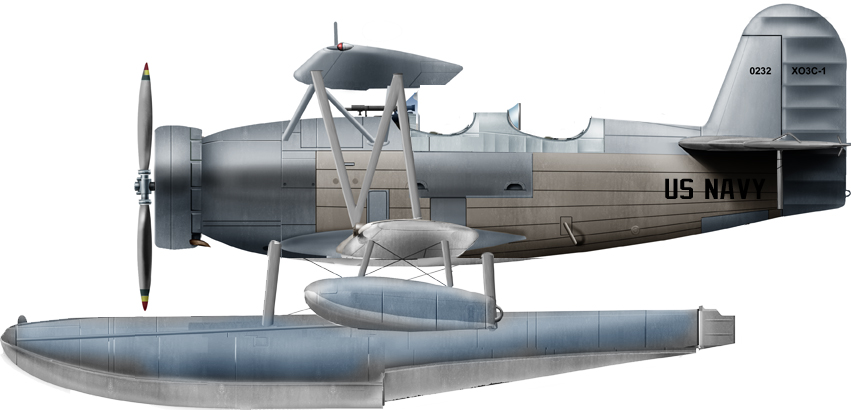
Curtiss XSOC-1, 1934
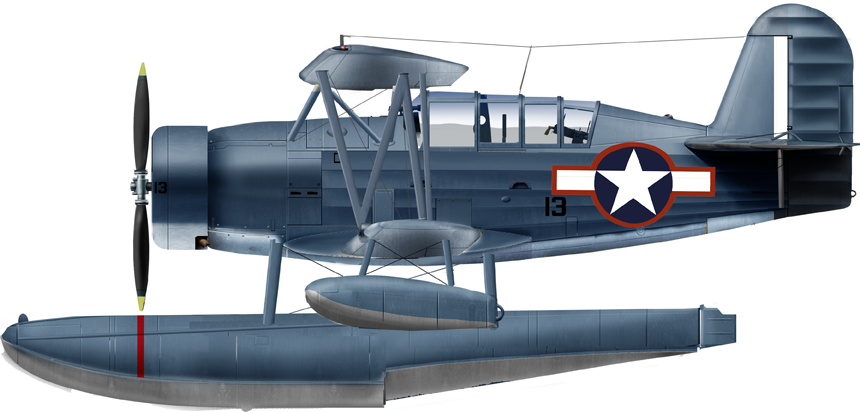
Curtiss SOC-1 Seagull, VCS-5, USS Salt Lake City 1943
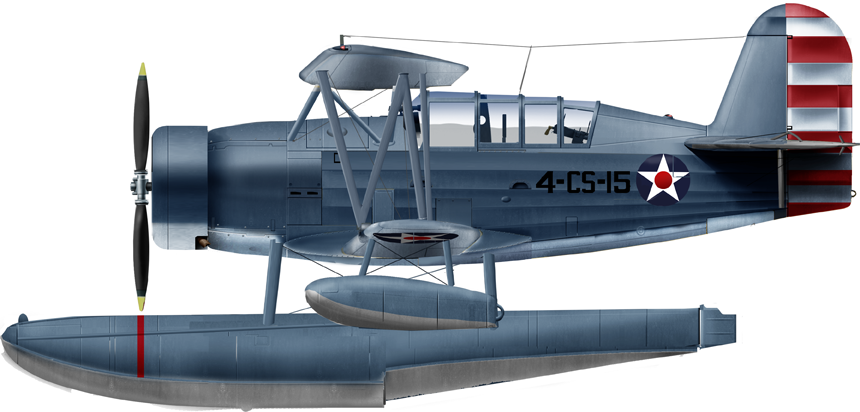
Curtiss SOC-1 Seagull, VCS-4, USS Indianapolis 1942
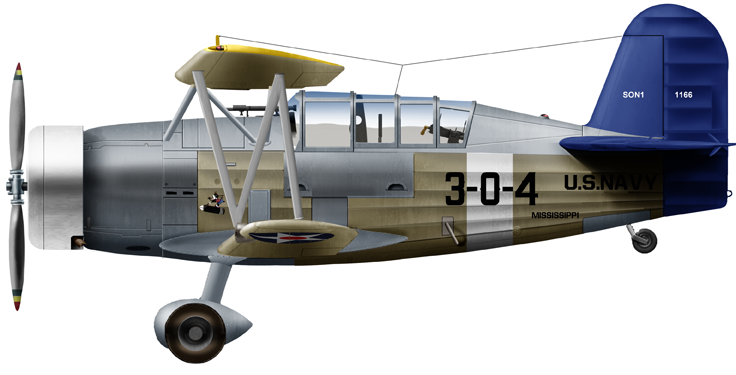
Naval Aicraft Factory SON-1, USS Mississippi, 1939
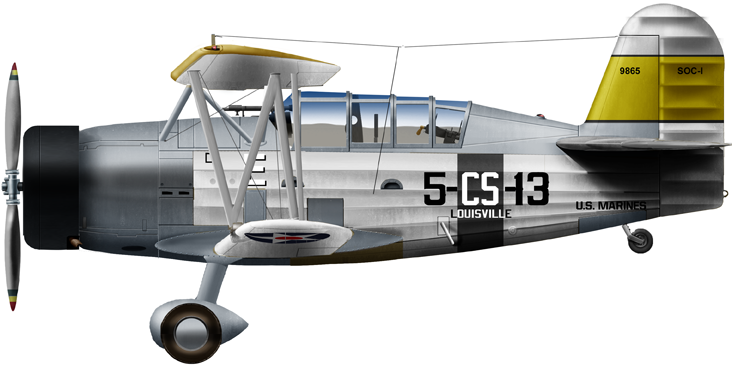
SOC-1 VCS-5, USS Louisville 1939
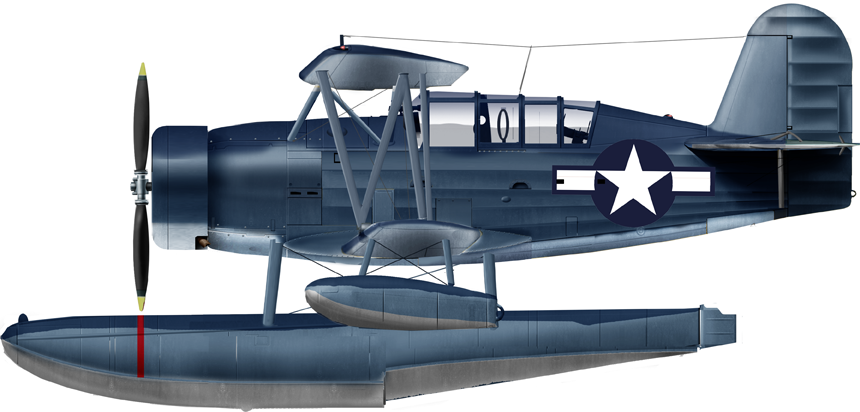
SOC-1 VCS-6, USS Minneapolis 1943
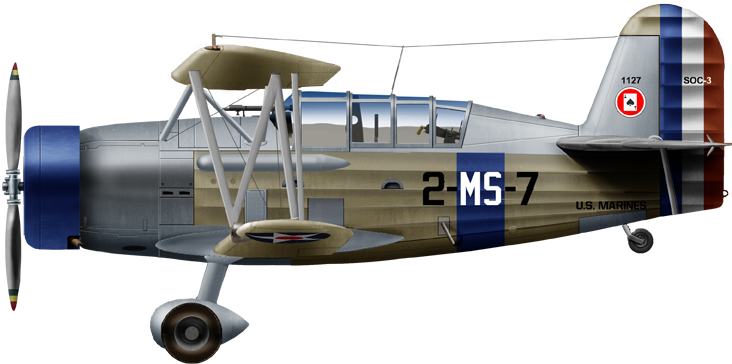
SOC-3 of the USMC, VMS-2, NAS San Diego 1939
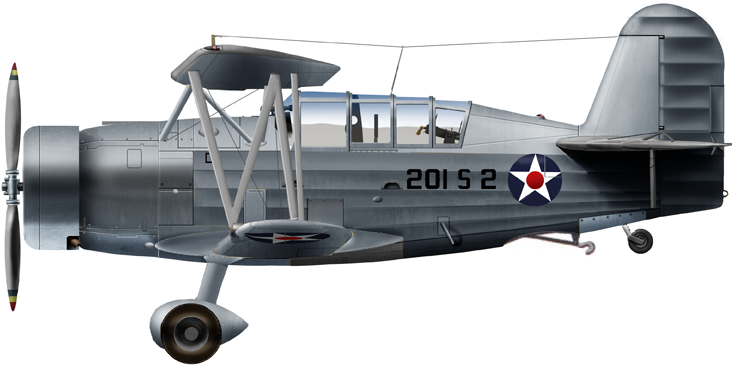
SOC-3A of VS-201 onboard CVE-1 USS Long Island 1941-42
Photos
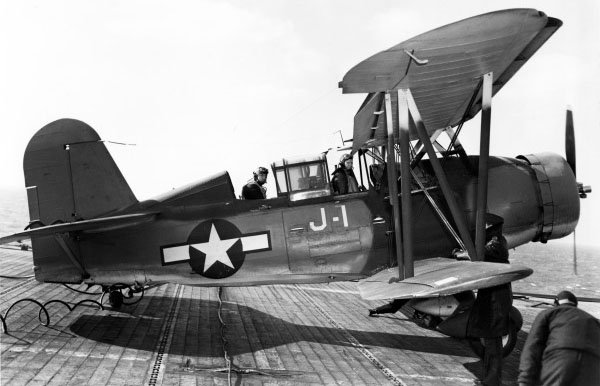
SOC-1 onboard an unidentified aicraft carrier, 1943 – Coll. Ray Wagner
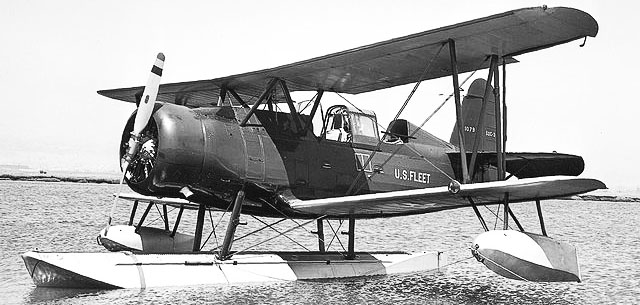
SOC-3 from USS Oakland Aurport Lagoon, June 1939
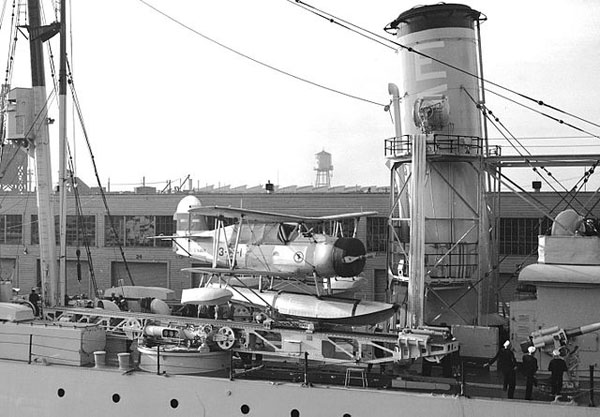
SOC-1 oboard USS Concord
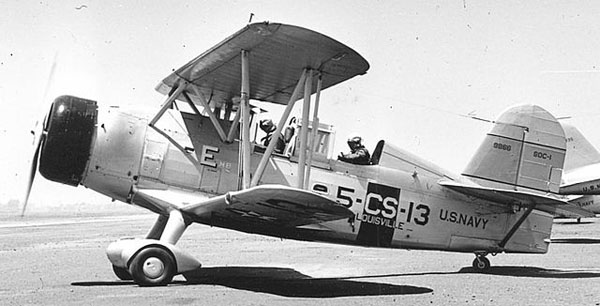
SOC-1 from CS-13 onboard USS Louisville
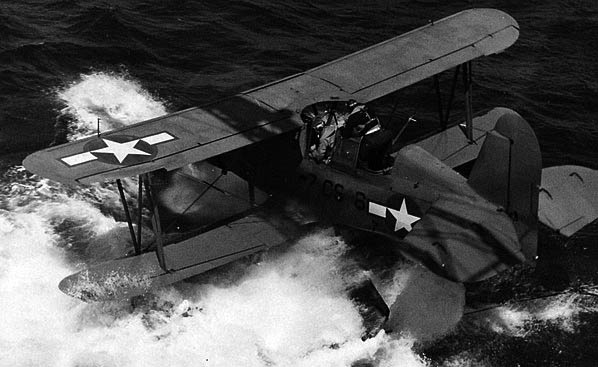
SOC-1 in July 1943, USS Tuscaloosa
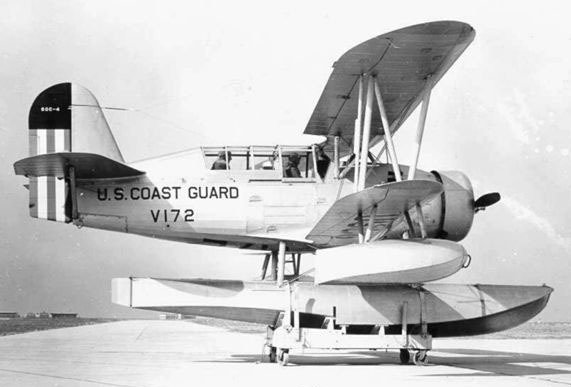
SOC-4 Seagull of the US Coast Guard

SOC-1 in flight
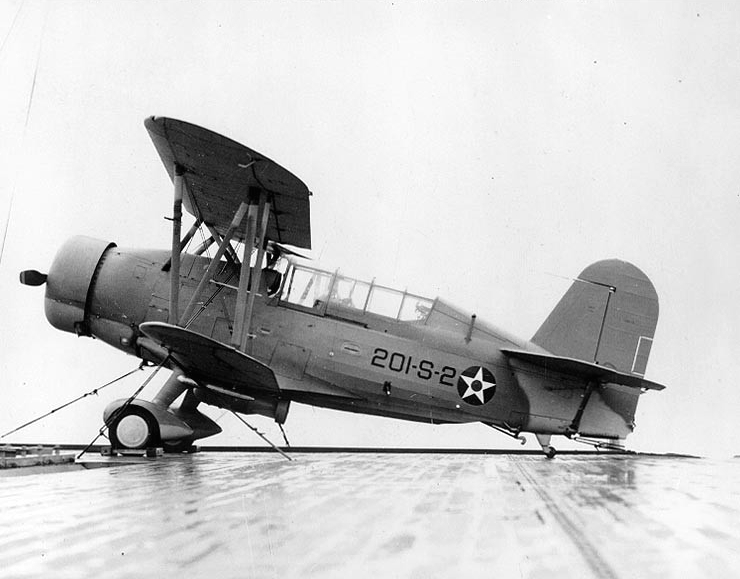
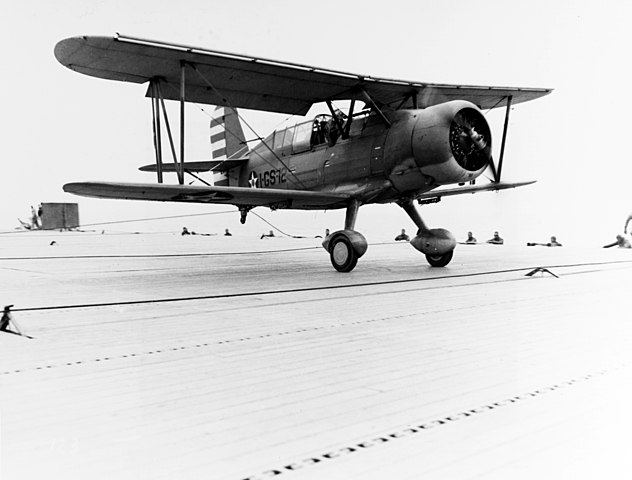
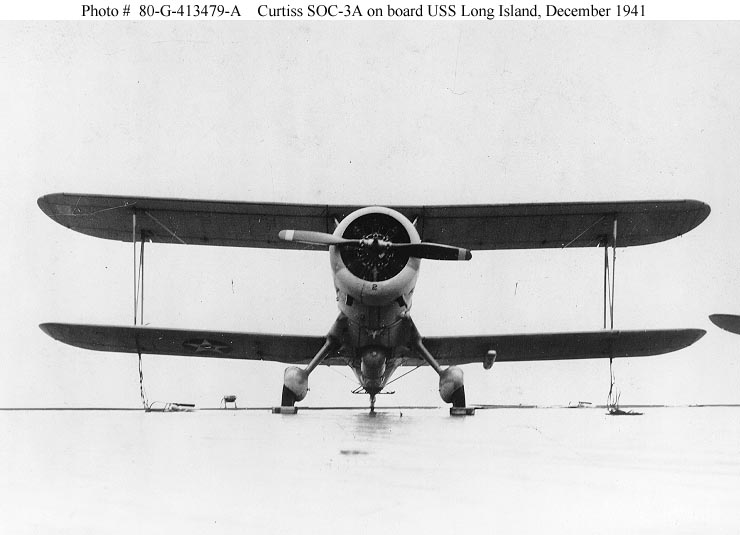
SOC-3A onboard USSS Long Island in Dec. 1941

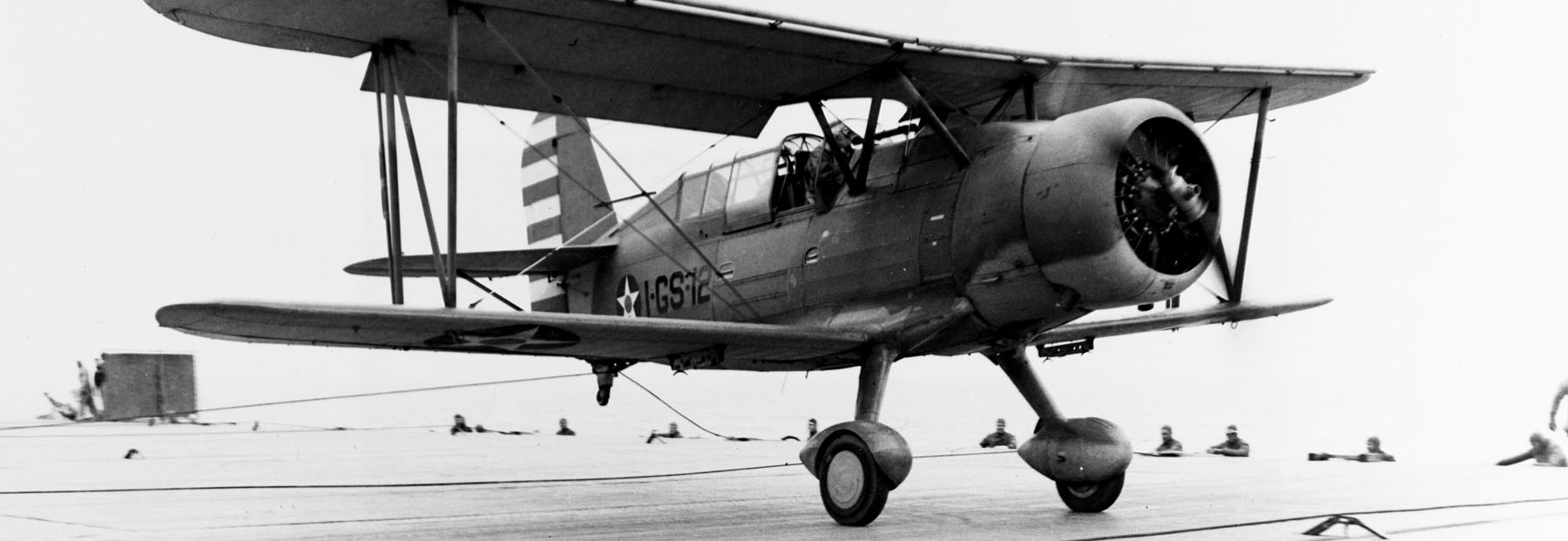
 Latest Facebook Entry -
Latest Facebook Entry -  X(Tweeter) Naval Encyclopedia's deck archive
X(Tweeter) Naval Encyclopedia's deck archive Instagram (@navalencyc)
Instagram (@navalencyc)





 French Navy
French Navy Royal Navy
Royal Navy Russian Navy
Russian Navy Armada Espanola
Armada Espanola Austrian Navy
Austrian Navy K.u.K. Kriegsmarine
K.u.K. Kriegsmarine Dansk Marine
Dansk Marine Nautiko Hellenon
Nautiko Hellenon Koninklije Marine 1870
Koninklije Marine 1870 Marinha do Brasil
Marinha do Brasil Osmanlı Donanması
Osmanlı Donanması Marina Do Peru
Marina Do Peru Marinha do Portugal
Marinha do Portugal Regia Marina 1870
Regia Marina 1870 Nihhon Kaigun 1870
Nihhon Kaigun 1870 Preußische Marine 1870
Preußische Marine 1870 Russkiy Flot 1870
Russkiy Flot 1870 Svenska marinen
Svenska marinen Søværnet
Søværnet Union Navy
Union Navy Confederate Navy
Confederate Navy Armada de Argentina
Armada de Argentina Imperial Chinese Navy
Imperial Chinese Navy Marinha do Portugal
Marinha do Portugal Mexico
Mexico Kaiserliche Marine
Kaiserliche Marine 1898 US Navy
1898 US Navy Sovietskiy Flot
Sovietskiy Flot Royal Canadian Navy
Royal Canadian Navy Royal Australian Navy
Royal Australian Navy RNZN Fleet
RNZN Fleet Chinese Navy 1937
Chinese Navy 1937 Kriegsmarine
Kriegsmarine Chilean Navy
Chilean Navy Danish Navy
Danish Navy Finnish Navy
Finnish Navy Hellenic Navy
Hellenic Navy Polish Navy
Polish Navy Romanian Navy
Romanian Navy Turkish Navy
Turkish Navy Royal Yugoslav Navy
Royal Yugoslav Navy Royal Thai Navy
Royal Thai Navy Minor Navies
Minor Navies Albania
Albania Austria
Austria Belgium
Belgium Columbia
Columbia Costa Rica
Costa Rica Cuba
Cuba Czechoslovakia
Czechoslovakia Dominican Republic
Dominican Republic Haiti
Haiti Hungary
Hungary Honduras
Honduras Estonia
Estonia Iceland
Iceland Eire
Eire Equador
Equador Iran
Iran Iraq
Iraq Latvia
Latvia Liberia
Liberia Lithuania
Lithuania Mandchukuo
Mandchukuo Morocco
Morocco Nicaragua
Nicaragua Persia
Persia San Salvador
San Salvador Sarawak
Sarawak Uruguay
Uruguay Venezuela
Venezuela Zanzibar
Zanzibar Warsaw Pact Navies
Warsaw Pact Navies Bulgaria
Bulgaria Hungary
Hungary

 Bundesmarine
Bundesmarine Dutch Navy
Dutch Navy Hellenic Navy
Hellenic Navy Marina Militare
Marina Militare Yugoslav Navy
Yugoslav Navy Chinese Navy
Chinese Navy Indian Navy
Indian Navy Indonesian Navy
Indonesian Navy JMSDF
JMSDF North Korean Navy
North Korean Navy Pakistani Navy
Pakistani Navy Philippines Navy
Philippines Navy ROKN
ROKN Rep. of Singapore Navy
Rep. of Singapore Navy Taiwanese Navy
Taiwanese Navy IDF Navy
IDF Navy Saudi Navy
Saudi Navy Royal New Zealand Navy
Royal New Zealand Navy Egyptian Navy
Egyptian Navy South African Navy
South African Navy






























 Ukrainian Navy
Ukrainian Navy dbodesign
dbodesign